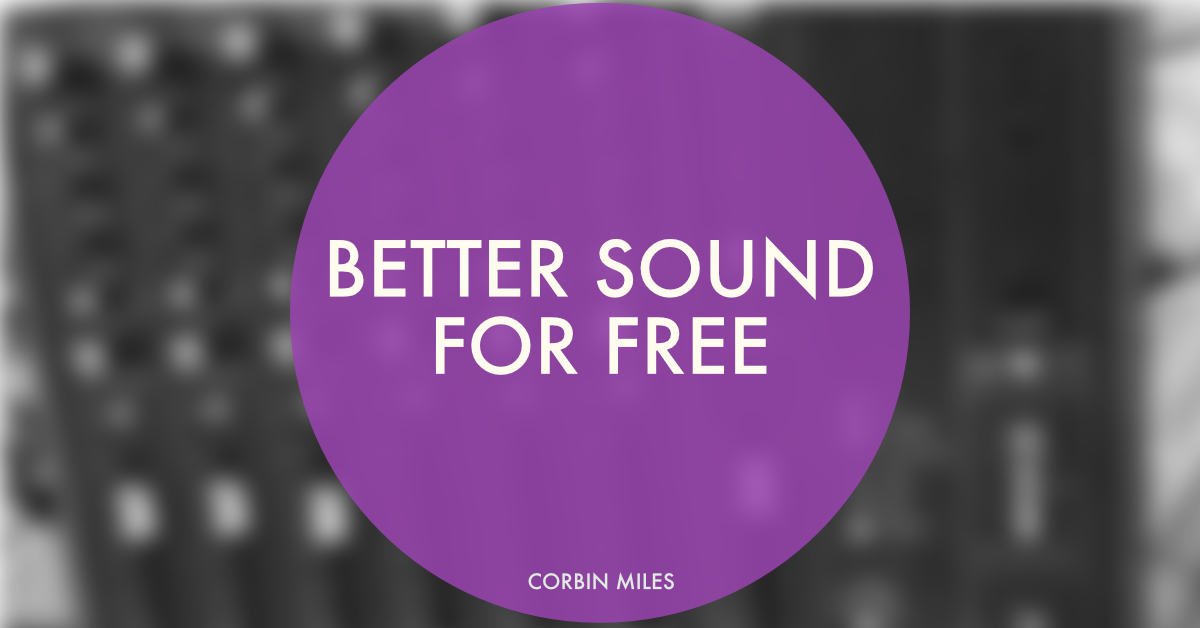
Better sound for free
No one notices a clean window. The same is true of good church audio. When it is clear, balanced, and working properly, no one notices. But when the sound is poor, everyone knows it!
If you’ve been in church for long, you know what I’m talking about. Ringing mics, muddy guitars, piercing vocals, and splashy mixes can pull our focus off of God in corporate worship.
There’s no silver bullet to end your Bad Sound Blues, but I hope I can give you some practical tips to improve your sound for FREE. Some of them are not what you think.
-
Train musicians, not technicians.
Contrary to popular belief, running sound is primarily musical, not technical. It is far easier to train musicians to do technical tasks, than to make musicians out of technicians. Not that we don’t need technicians. They are a huge asset to help us troubleshoot problems and set up equipment, but invest in training your musicians to run sound and your mixes will improve drastically.
-
Simplify your band.
Simplifying your band will improve your sound. The bigger the band, the more challenging it is to mix it all together. More musicians means more monitors, more stage volume, often a muddier mix, and potentially more feedback. Keep it simple, strip back the band, and everything will sound cleaner.
-
Simplify arrangements.
Beyond a trimmer band, simplify your arrangements. Play the same or complementary rhythms, open up chords by having most instruments drop the third or seventh, and most importantly, leave the low end to the bass guitar. Any notes lower than C below “middle C” will cloud the mix. Good arrangements are key to good mixes.
-
Less is more.
Often, musicians struggle to hear themselves on noisy stages. They commonly request to have the person at the desk turn them up in their monitor speaker. Instead, try turning everything else in their monitor down. By reducing each musician’s monitor to the essentials - the worship leader and themselves - you greatly reduce stage volume, make each mix more defined, and clean up the main mix. Often, the bleed from the other monitors is enough for the musicians to hear each other.
-
Use EQ, not level.
Many times the best way to fit an instrument into a mix is not making it louder, but making space for it with EQ.
-
First off, reduce the low end on everything but bass instruments and drums. Most desks have a low cut filter on each channel to remove low frequencies. Engage the filter, followed by reducing the low shelf on the channel EQ until the muddiness disappears. This is especial helpful with vocals.
-
Second, find what frequency defines each instrument and give it a wee boost while reducing that frequency on other instruments in the same range. Reducing a bit of the mid-frequencies on keyboards or guitars can make vocals pop out of the mix.
I hope these simple suggestions clarify your mixes and deepen your worship!
Question: What ways have you helped improve the sound of your church audio? What tips do you have? Leave a comment below.